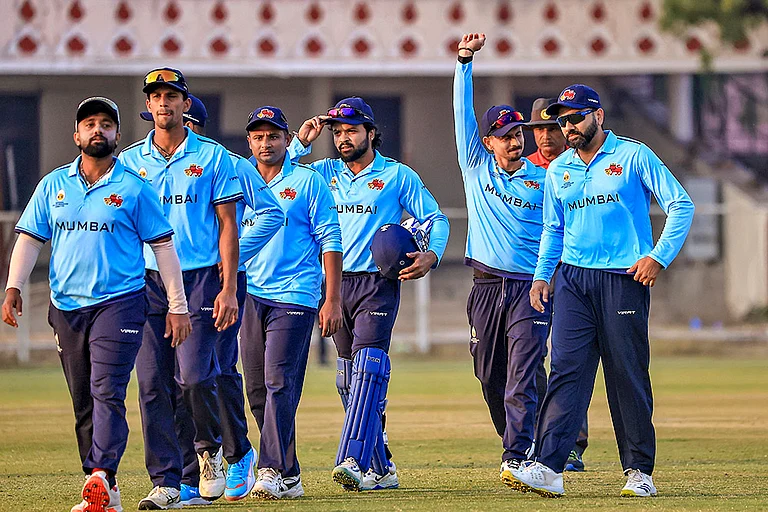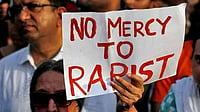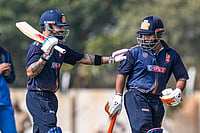ONCE upon a time, there was a thriving Indipop industry. People sang at its birth, ageing singing sensations crooned at its growth and wannabes who could pull strings but few vocal chords jumped onto the bandwagon. The media went to town heralding its arrival, devoted reams of newsprint to the next Big Thing since Bollywood. Indipop was in. All else had popped out.
But now, as things stand, Indipop's popped out. This happening music scene has split wide open. And what's showing bears scant resemblance to harmony. In fact, jagged notes tumbled into the open at the recently concluded MTV-Planet M music forum where playback singer Abhijeet railed at the state of the industry. Where quizmaster Derek O'Brien brought up for discussion the hype around Sony's new artiste KK.
Less rhythm, more blues. That's been the story of pop this year. Whereby the music industry, after any number of drummed-up declarations of genius, could come up with just one winning name, that of Sonu Nigam, playback singer and TV anchor with established candy-pop credentials. His Deew-ana (T-Series), with sales of over 10 lakh, alone managed to touch a chord with consumers. While Jagjit Singh and Pankaj Udhas can be deemed success stories only if you classify their music as pop.
"That's where the problem begins," says an industry expert. "No one knows what pop is. The assumption is: anything which isn't Bollywood or spiritual music is pop. But it's about icons, a lifestyle, youth. It's not about dyed-in-the-hair Anu Malik trying to realise his ambitions of becoming a singer."
Anu Malik wasn't the only one listeners rudely cut off. Having become discerning, they've tuned off some of the best (?) and biggest. Whereas an average film album sells as much as 40 lakh units, the best Indipop albums used to sell 10 to 15 lakh and are now down to three lakh. So, out went Nigam's second album Mausam (Magnasound), Mehnaaz's Mausam (BMG), Alisha's Dil Ki Rani (Virgin Records), Anaida's Chori Chori (BMG), Shweta Shetty's Dil La Le (Magnasound) and Bali Brahmbhatt's Kamaal Hi Kamaal (Poly-gram). Even Govinda, who otherwise draws in whistles, attracted a whimper with his eponymous album (HMV). A few good men who might've made it perished in the music channel cacophony.
So, why wasn't anyone playing the listeners' song? Says Suresh Thomas, chief, BMG Crescendo: "There's a slowdown in the music industry and consumers are screaming for change. Today, a hit song does more to sell an album than loyalty to a star or a group. Marketing too is song- rather than artiste-oriented, so much so that an artiste's forgotten by the time his second album's out."
With projected hits proving to be duds, pop singers have been changing their tunes, looks and music companies in search of the magic mantra. "You've to look like Mad-huri Dixit, sing like Asha Bhonsle; it's a tall order," says singer Suneeta Rao. Successful singers in turn have watered down their appeal by doing too much too soon. Baba Sehgal took to bhangra, baby doll Alisha was unable to hang on to her appeal or the success of Made in India, Colonial Cousins switched to lucrative contracts, gave up musical innovation.
Says Atul Churamani, director (artistes and repertoire), Virgin Records: "There has been no personality marketing alongside the development of a project. Sadly, this happens even when a project is artiste-driven. There has to be investment in an artiste, in the creation of an image and a particular sound for a pop star. The artiste and his company should have the same vision. Over the world, one's seen the artistes who do well are those who have had long innings with their music companies. A perfect example here would be Daler Mehndi's stint with Magnasound."
BUT Daler's on his way out of Magnasound and headed towards T-Series next year. Shubha Mudgal's Ab Ke Saawan was released by Virgin Records, her next album Pyar Ke Geet by Rajshri and the third will be by Archies Music. All within a span of three months. Pankaj Udhas' Mehak was launched by T-Series, Stolen Moments by Polygram and he's signed his third album with HMV. The thrust seems to be on working out a better deal than a better product.
"Music companies alone are to blame for the mess the pop industry is in," says Amod Mehra, chief, Entertainment Business Network. "They've pampered certain artistes, kept increasing the budgets of music albums and videos." Nor has the growing number of players in a static, shrinking market helped. "Besides the big six music companies, there are 20 other one-shop operators, releasing a minimum of five pop music albums a year. That's 125 pop albums or a new release once in two days. Of the 125 albums released, 100 are new artistes. How can you lure a customer to spend Rs 60 on a cassette for just one song that's shown repeatedly on TV? There's no logic. The bubble had to burst."
Sony's rising star, KK's debut album Pal sold some 75,000 units. Four years ago, it would've been deemed phenomenal. Not today. Reason: if the sales of an album nets in not more than Rs 10-12 lakh and the total budget's worked out to Rs 35-40 lakh, of which around Rs 20 lakh's been spent on the video, then the album's obviously a financially unsound proposition. Made on a shoestring budget, Altaf Raja's Tum To Teherey Pardesi was a runaway hit. His state-of-the-art second, at around Rs 40 lakh, was a non-starter.
You can't spend Rs 10 lakh on an album; Rs 12 lakh on its video," says Kalyanasun-daram K.S., director, programming and talent, artistes and repertoire, MTV (India). "What you need to give is good sound and complement it with a good video. But the crux always is the lyrics and how well the song's composed. If that fails, nothing will work."
INSTEAD, melody's been substituted with mediocrity, talent for long legs. As viewers overdosed on videos short on skirts and substance, music companies kept flooding music channels with an unending supply of the same stuff. Says Mahmood Karmali of Mumbai's music store Rhythm House: "Why should the consumer buy a pop album when film music's become so much better? A pop album generally contains just one number that catches the consumer's attention. The channels are playing it already all day, all the time. Why should he go out and buy an album?" Proof of the glut: in '96, the MTV office used to get three videos a day; in '97, it went up to 35 and this year, up to September they'd got 360.
"We should be trying to reach the Hindi film music listeners rather than the English music listeners," says pop singer Anaida. "Music companies dilute their own efforts by promoting 20 artistes. The market doesn't justify it. To top it all, there've been cases where over Rs 40 lakh have been spent on an album. Recovering it isn't easy," says she. Something that forced a rethink for music video director Ken Ghosh. Disgusted with the scenario, he cut down on his projects since October last year. "There are no interesting songs or artistes, or else the budgets are restrained. Strangely, the number of videos has increased. Earlier, if there were two per album, today there are five. Music companies must take a hard look at themselves, trim their releases and number of artistes as every bad artiste gives the genre a bad name," says Ghosh.
With album jackets gathering dust in music stores, music companies are finally taking note. Industry observers see distinct trends emerging. First, artistes like Jagjit Singh are being signed on who can guarantee sales. Second, they're buying the music rights of film music. Third, they're developing their artistes and repertoire and also focusing on international repertoire. Consider the unprecedented sales of Sony's Vengaboys. "Tips Cassettes can afford to buy the music rights of five to six Hindi films and hope one would click," says an industry watcher. "But there's profit in international albums. No acquisition costs, only the cost of producing cassettes and royalties. And there's money to be made on every cassette sold."
Desperate situations call for desperate measures, and for every one-album deal senior artistes sign up, contracts of lesser known commercially unviable artistes are being made to lapse. Even channels like Channel V have become more discerning about artistes they choose to project. Says Mandar Thakur, head of music and artiste relations, Channel V: "There's pressure from music companies for their pop albums to be promoted, but there should be some standards set." The seriousness has set into the industry as well. Music companies a la Virgin Records are showing flippa-ncy the door. "The first thing I ask an artiste is whether he's performed at shows," says Churamani. "An artiste has to be a performer. He has to be performing at shows, concerts. That's where the money is. Also, the fans.
Jagjit Singh's been interacting with his audience for years. So, there's almost guaranteed sales on his album. Daler feels itchy if he doesn't do a particular number of shows per month."
Last year's successes—Euphoria, Junoon, Silk Route, Shanker Mahadevan, Shiamak Davar, Falguni Pathak—either had talent or twist to see them through. Shanker Mahadevan's formula is to concentrate on the whole album, not just one song. "An album should've no loose ends. It should be technically, lyrically, musically perfect." As music companies scrabble around to sign the heavyweights, the message's loud and clear. Never mind the name. To play the game and play it right, first play it by ear.




















.png?w=200&auto=format%2Ccompress&fit=max)



